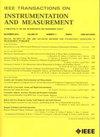AER-Net:用于红外小目标探测的自适应特征增强和分层细化网络
IF 5.9
2区 工程技术
Q1 ENGINEERING, ELECTRICAL & ELECTRONIC
IEEE Transactions on Instrumentation and Measurement
Pub Date : 2024-10-23
DOI:10.1109/TIM.2024.3485456
引用次数: 0
摘要
红外小目标探测(IRSTD)在许多民用和军事应用中都具有重要价值。然而,目前的大多数方法仍难以维持低对比度的微小目标,并且容易因与目标相似的混淆噪声而导致误报。此外,由于难以获得足够精细的细节,在准确分割目标形状方面仍然存在挑战。为了解决这些问题,我们提出了自适应特征增强和分层细化网络(AER-Net)来提取小目标的分辨特征,同时利用不同层的不同语义来减少误报并保留目标的边缘轮廓。具体来说,我们通过特征表示增强模块(FREM)提出了一种专为 IRSTD 量身定制的 U 型架构,该架构结合了卷积神经网络(CNN)的局部相关性和变形器(Transformers)的全局相关性,以增强特征,同时防止丢失微小目标。在此基础上,我们进一步设计了菊花形相关性感知模块(DCM),以捕捉足够的全局上下文,从而减轻深层的杂波干扰。随后,我们设计了一个门控细化模块(GRM),利用高层次特征作为指导,从编码器中细化低层次特征,以保留局部细节,并进一步去除较浅层中的噪声。此外,我们还将我们的方法与监测设备相结合,将 IRSTD 的应用扩展到对高原湖泊和湿地鸟类的自动监测,同时提供了一个名为 BSIRST_v1 的红外鸟类数据集,其中的目标具有较高的形态不确定性,从而推动了该领域的研究。在三个公开数据集和提议的数据集上进行的广泛实验表明,我们的方法在检测能力和分割精度之间实现了平衡。值得注意的是,在具有挑战性的基准 NUDT-SIRST 和 IRSTD-1k 数据集上,我们的方法在平均交集大于联合(IoU)指标上有显著改进,分别为 4.46% 和 3.86%。源代码和数据集见:https://github.com/fuqingzhang/AER-Net。本文章由计算机程序翻译,如有差异,请以英文原文为准。
AER-Net: Adaptive Feature Enhancement and Hierarchical Refinement Network for Infrared Small Target Detection
The infrared small target detection (IRSTD) has significant value in many civilian and military applications. However, most current methods still struggle to maintain tiny targets with low contrast and are prone to false alarms caused by confusing noise similar to the targets. Furthermore, challenges remain in accurately segmenting target shapes due to the difficulty in acquiring sufficient fine-grained details. To address these issues, we propose the adaptive feature enhancement and hierarchical refinement network (AER-Net) to extract discriminative features of small targets while leveraging the distinct semantics of different layers for reducing false alarms and preserving edge contours of targets. Specifically, we present a U-shaped architecture tailored for IRSTD by a feature representation enhancement module (FREM), which combines the local correlation of convolution neural networks (CNNs) and the global correlation of Transformers to enhance features while preventing the loss of tiny targets. Based on this, we further devise a daisy-shaped correlation-aware module (DCM) to capture sufficient global contexts for mitigating clutter interference in deeper layers. Subsequently, a gated refinement module (GRM) is designed to refine low-level features from the encoder utilizing high-level features as guidance for preserving local details and further removing noise in shallower layers. Moreover, we integrate our method with the monitoring device to extend the application of IRSTD to automatic monitoring of birds in plateau lakes and wetlands, while contributing an infrared bird dataset named BSIRST_v1 with targets exhibiting high morphological uncertainty to advance research in this field. Extensive experiments on three public and the proposed datasets have demonstrated that our method achieves a balance between detection capability and segmentation accuracy. Notably, our approach has significant improvements in the mean intersection over union (IoU) metric on the challenging benchmark NUDT-SIRST and IRSTD-1k datasets with 4.46% and 3.86%, respectively. The source code and dataset are available at:
https://github.com/fuqingzhang/AER-Net
.
求助全文
通过发布文献求助,成功后即可免费获取论文全文。
去求助
来源期刊

IEEE Transactions on Instrumentation and Measurement
工程技术-工程:电子与电气
CiteScore
9.00
自引率
23.20%
发文量
1294
审稿时长
3.9 months
期刊介绍:
Papers are sought that address innovative solutions to the development and use of electrical and electronic instruments and equipment to measure, monitor and/or record physical phenomena for the purpose of advancing measurement science, methods, functionality and applications. The scope of these papers may encompass: (1) theory, methodology, and practice of measurement; (2) design, development and evaluation of instrumentation and measurement systems and components used in generating, acquiring, conditioning and processing signals; (3) analysis, representation, display, and preservation of the information obtained from a set of measurements; and (4) scientific and technical support to establishment and maintenance of technical standards in the field of Instrumentation and Measurement.
 求助内容:
求助内容: 应助结果提醒方式:
应助结果提醒方式:


